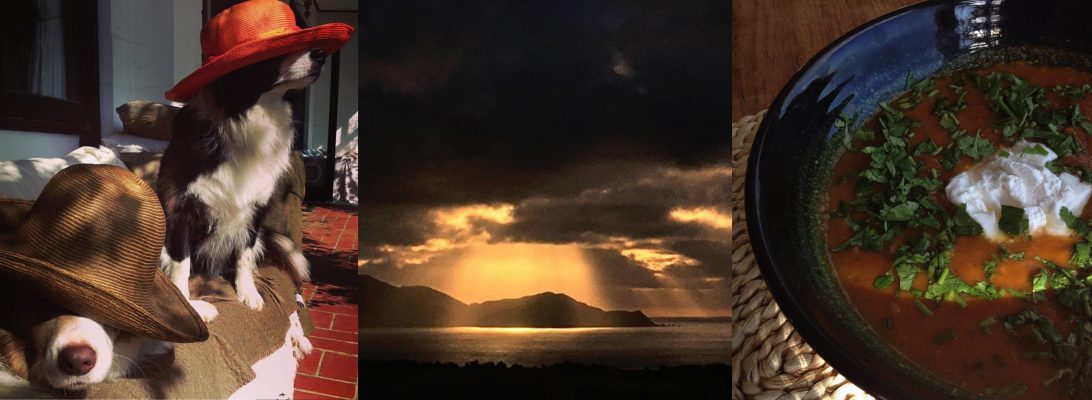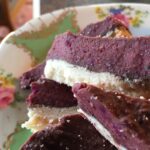
In early May I turn forty-seven years old. Which at times, I find almost unbelievable because there are many moments in which I feel as uncertain and ungainly as I did at fourteen. Which, in fact, makes total sense because at forty-seven I’m as hormonally challenged as I was in 1986. Yep. Let that sink in. At forty-seven my hormones are as out of balance as they were when I was a spotty, moody, sometimes-really-unpleasant-to-be-around, teenager. Why? Perimenopause.
Perimenopause. Let’s say that again because it’s so unfamiliar to most people that my writing app tells me it’s not a real word.
Perimenopause, the stage all women go through, generally between their early forties and early fifties. These sometimes crazy-making years riding the hormonal rollercoaster which precede menopause and mark the end of a woman’s reproductive stage.
I continue to be astonished, ASTONISHED, by how little this is acknowledged or talked about. Here I am, in my fifth decade as a female human being and before I stumbled across perimenopause, while doing some health research four years ago, I had no idea that I would experience a second major hormonal transition in my life.
We hurtle into our teenage years with some anticipation of ‘hormonal stuff’. Our parents, caregivers and teachers are under no illusion that this period is challenging for the adolescent and the people around her. So why don’t we do that for perimenopausal women? We’re left to suddenly find ourselves in this unanticipated territory of mood and sleep disruption, short term memory issues, foggy brains, irregular menstrual cycles, heavy periods, migraines, digestive issues, low libido, weight gain, vaginal dryness and bloating, amongst other symptoms. We’re expected to continue moving at full tilt, all the while juggling careers and families, without any awareness or support. The people around us wonder what on earth is up with the sometimes crazy middle aged women in their lives, without understanding that their hormones are out of balance and it has a major physiological, psychological and often spiritual impact.
My perimenopause started in my early forties and was exacerbated by a series of miscarriages and the subsequent stress of these and other significant life events. Over the last several years I’ve come to understand how complex and extraordinary our endocrine system is. It’s tempting (but impossible) to tease out which symptoms are due to prolonged stress and which would have occurred regardless. It’s also a moot point because it’s just not that simple. For starters, pregnenolone – the master hormone for our sex hormones progesterone, estrogen and testosterone – is produced by the adrenal gland. The prolonged stress of our far-too-normal overwhelming lives, has a significant effect on our adrenal system and consequently how much pregnenolone is available for the necessary balance of sex hormones. In short, for most women in their middle age, life is chronically stressful.
So what can we do about it? How can we support each other and ourselves through this major hormonal transition? Well, quite a few things actually.
We need to talk about it, especially since our medical system certainly doesn’t. It seems to me that one of the unhelpful consequences of the tiny nuclear families so many of us live in, is that we’re missing the wise grandmothers and aunties who can say to us, “Oh sweetheart, this is normal, I’ve been through it. I know how hard it can be, here’s something that will help.” In my experience, talking about this stage in my life with close friends, family and a knowledgeable and supportive health practitioner has made a huge difference. Understanding that this is natural and normal and that I am not in fact going crazy, has helped helped a great deal.
On a very practical level, what continues to be of quite remarkable help, is an awareness of those things that support me in managing my version of perimenopause. I’ve learned the hard way – as have many women – that while caffeine and sugar (dark chocolate, sigh) provide me with an immediate and glorious fix to my fatigue and low mood, the pay off is not worth it. These things stress my adrenals further, create even more imbalance and do not make for a happy Tink (or husband, for that matter). I’ve learned that stress makes perimenopause worse and so finally, after years of not really committing to it, I’ve found that a daily practice of yoga and meditation has a disproportionally positive effect on my mind and body. And finally (because I could go on but should get off my soap box), sleep. Nothing seems to knock me off my perch more than bad sleep, I’ve learned that having a light and early dinner in order to not overtax my digestive system, getting off my computer or phone by 9pm, in bed by 10pm and a short breathing exercise to relax my nervous system, are key ingredients for a decent sleep.
There is so much to say about this but in this instance, I’m not going to. Instead, I’m going to finish what has turned out to be an emotional plea to really just talk about this stuff with a shameless sales pitch. In navigating my way through chronic illness, adrenal overload and perimenopause over the last several years, I’ve seen a number of practitioners. My GP is very good, but he’s heavily time constrained by a system that is fundamentally not suited to treating chronic illness or, in the case of perimenopause, responding to something that is not a pathology but still requires support. However, recently I’ve been working with (i.e. as a client) and for (i.e. writing social media content as a way of continuing my herbal medicine study) a Kapiti based naturopath and medical herbalist. Her name is Daisy Wood (her real name not a perfect brand name!) and she is specialising in perimenopause.
Daisy is at the tail end of perimenopause herself and the majority of her clients are women navigating their way through this phase of life. She is highly motivated, passionate, very thorough and kind. I haven’t delved into it here, but there are herbs that have been used by wise women (and indeed male healers) for thousands of years in the West and East to support perimenopause and menopause. Daisy works with these herbs in addition to nutrition and other lifestyle factors. If you’re sceptical about naturopathy and herbal medicine, let me just add that my GP has prescribed the same herbs Daisy works with. If you live in Kāpiti, or the Wellington region, you can obviously go and see her, but she also has an excellent private Facebook group called First Flush where she very regularly posts material on perimenopause and converses with her community. Her posts on Instagram and Facebook are information rich and easy to read. If you want to learn more about perimenopause and find support for it, then my recommendation of her is wholehearted.







